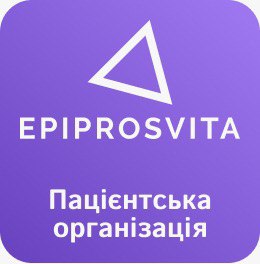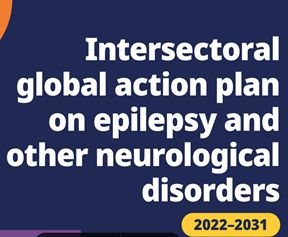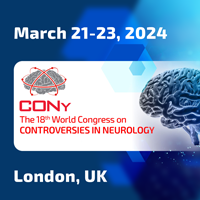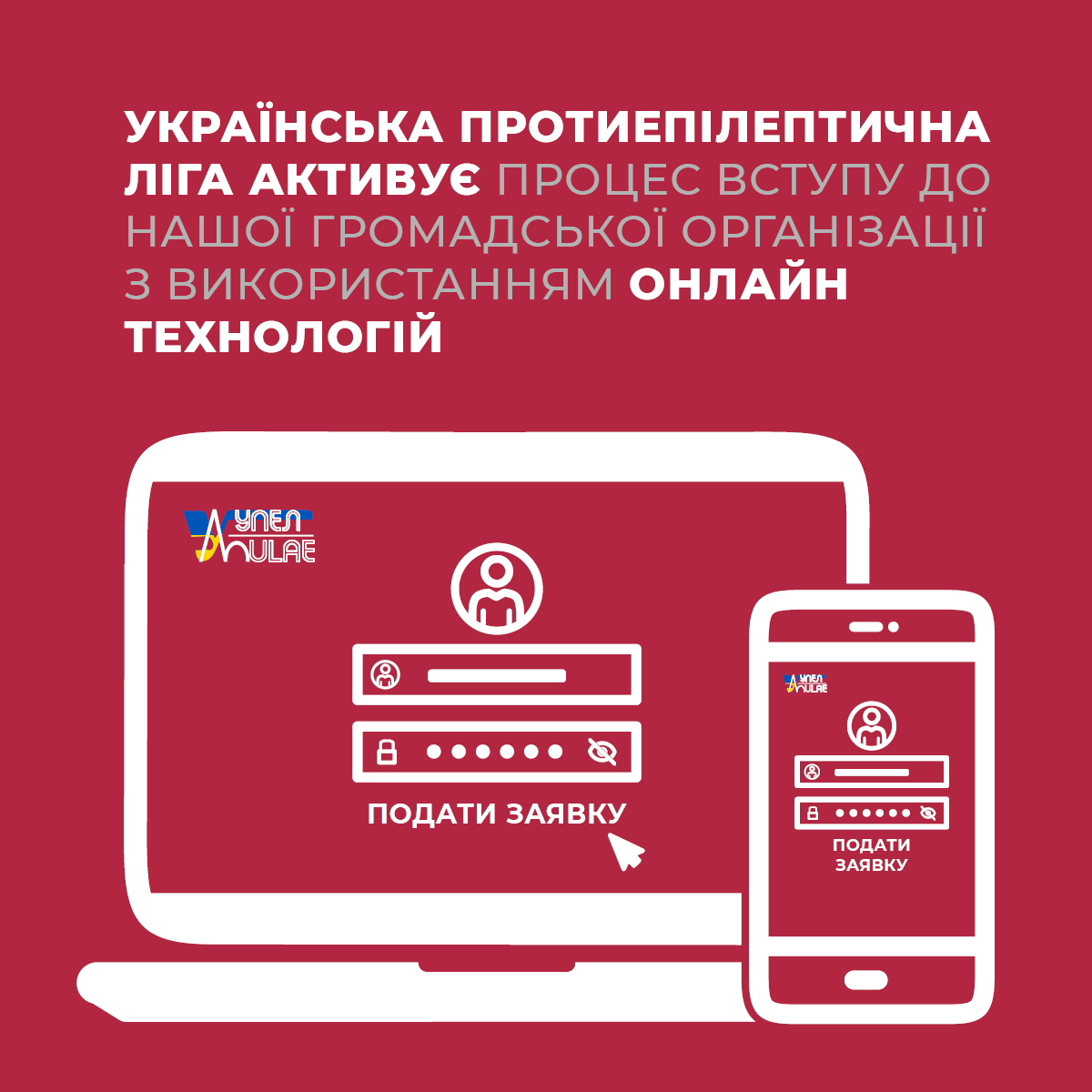Editor’s Choice vol. 84: Parul Agarwal, Huaqing Xi, Nathalie Jette, Jung-yi Lin, Churl-Su Kwon, Mandip S. Dhamoon, Madhu Mazumdar. A Nationally Representative Study on Discharge against Medical Advice among those Living with Epilepsy
Markus Reuber MD PhD, Academic Neurology Unit, University of Sheffield, Royal Hallamshire Hospital, Glossop Road, Sheffield, S10 2JF
Previous studies suggest that around 3% epilepsy patients leave hospital against medical advice [1]. Seizures are one of the three most common symptoms leading to emergency room presentations which ultimately end in Discharge Against Medical Advice (DAMA) [2]. DAMA gets in the way of proper discharge planning, may lead to medication errors, repeated seizures and other poor health outcomes. It is therefore no surprise that patients who decide to leave hospital prematurely are at strongly increased risk of being re-admitted to hospital within 30 days [1]. Not least because of the high risk of re-admission, DAMA also represents a financial challenge for health and social care systems.
My Editor’s Choice from the current volume of Seizure is an original research paper by Parul Agarwal et al. [3], which seeks to explore the causes and predictors of DAMA. Their study uses the National Inpatient Sample (NIS) for the years 2003 to 2014. The NIS includes all inpatient discharges across 44 states and the District of Columbia, representing more than 96% of the U.S. population. It is a nationally representative database maintained by the Agency for Healthcare Research and Quality. The large case numbers and the availability of data spanning a period 12 years allow detailed exploration and the exploration of temporal trends. For the purpose of their analysis, Agarwal et al. split the available sample of inpatient admissions into those that ended in DAMA vs. those where the final discharge occurred with the clinicians’ approval.
The figures from 2014 provide an impression of the size of the problem: Out of 7,071,762 admissions, 187,850 were coded as related to epilepsy, 3,783 of whom (2.01%) were identified as ending in DAMA. Of the variables which distinguished between the two outcomes in univariate analyses, a number of predictors continued to make a significant contribution to a multivariate model: Blacks had higher odds of DAMA than Whites (AOR = 1.12, 95% CI = 1.02, 1.22, p = 0.02), admissions of patients from poorer households were more likely to end in DAMA (adjusted OR (AOR) = 1.90; 95% CI = 1.65, 2.18; p < 0.0001), more Medicaid than Medicare (AOR = 2.14; 95% CI = 1.93, 2.37; p<0.0001) and self-pay admissions (AOR = 3.99; 95% CI = 3.47, 4.59; p<0.0001) admissions were associated with DAMA. Weekend admissions ended in DAMA more commonly than weekday admissions (AOR = 1.17; 95% CI = 1.08, 1.26; p<0.0001). A lower risk of DAMA was associated with older age (AOR = 0.991; 95% CI = 0.989, 0.993; p<0.0001), higher levels of comorbidity (AOR =0.97; 95% CI = 0.96, 0.97; p<0.0001), female sex (AOR = 0.67; 95% CI = 0.62, 0.71; p<0.0001), Hispanic extraction (AOR = 0.74; 95% CI = 0.64, 0.86; p<0.0001), elective admissions (AOR = 0.34; 95% CI= 0.28, 0.42; p<0.0001), and hospital location in the Midwest (AOR = 0.57; 95% CI = 0.49, 0.69; p<0.0001) compared to the Northeast US.
Although epilepsy patients whose admissions ended with DAMA had fewer comorbidities overall, some specific comorbidities (including alcohol and drug abuse disorders as well as mood disorders) were associated with an increased risk of DAMA. Alcohol-related disorders were among the top 5 causes of admission in people with epilepsy who left against medical advice.
The proportion of epilepsy-related admissions ending in DAMA increased substantially between 2003 and 2014 (from 1.13% to 2.01%, p<0.0001).
While the findings of this study can only provide an initial impression of the causes and predictors, the potential of DAMA to fragment care provision, to put patients at risk and waste limited health care resources are so obvious that this study should serve as a wake-up call not only to health but also to social service providers. Especially the near doubling of DAMA since 2003 is deeply troubling. Further research into what actually motivates patients to leave hospital against medical advice is urgently required. The largely social risk factors identified in this study suggest that DAMA is not simply an ending of one particular episode of inpatient care but an expression of a much more profound estrangement between patients with epilepsy and those providing medical care for them.
References
- Raja A, Trivedi P D, Dhamoon M S. Discharge against medical advice among neurological patients: Characteristics and outcomes. Health Services Research 2020, 55:681-689.
- Hoyer C, Stein P, Alonso,A. et al. Uncompleted emergency department care and discharge against medical advice in patients with neurological complaints: a chart review. BMC emergency medicine 2019 (19) 52, doi.org/10.1186/s12873-019-0273-y
- Agarwal P, Xi H, Jette N, Lin J-Y, Kwon C-S, Dhamoon MS, Mazumdar M. A Nationally Representative Study on Discharge against Medical Advice among those Living with Epilepsy. Seizure 2021 84:84-90
Вибір редактора том 84: Parul Agarwal, Huaqing Xi, Nathalie Jette, Jung-yi Lin, Churl-Su Kwon, Mandip S. Dhamoon, Madhu Mazumdar. Національне репрезентативне дослідження виписки пацієнтів зі стаціонару всупереч медичним рекомендаціям серед осіб, які мають епілепсією
Маркус Реубер, доктор медичних наук, відділення академічної неврології, Університет Шеффілда, Королівська лікарня Халламшир, Глоссоп-роуд, Шеффілд, S10 2JF
Попередні дослідження показали, що близько 3% пацієнтів з епілепсією залишають лікарню передчасно за власної ініціативи без медичних рекомендацій [1]. Напади є одним з трьох найбільш поширених симптомів, що призводять до надання невідкладної допомоги, яка в кінцевому підсумку закінчується випискою пацієнта всупереч медичним рекомендаціям (англійський термін Discharge Against Medical Advice DAMА) [2]. Феномен DAMA заважає правильному плануванню виписки, може призвести до помилок у лікуванні, повторних нападів та інших поганих наслідків для здоров'я. Тому не дивно, що у пацієнтів, які вирішили передчасно залишити лікарню, існує суттєво підвищений ризик повторної госпіталізації протягом 30 днів [1]. Не в останню чергу через високий ризик повторної госпіталізації, DAMA також представляє фінансову проблему для систем охорони здоров'я та соціального забезпечення.
Мій редакційний вибір з поточного тому журналу «Seizure» – це оригінальна дослідницька робота Parul Agarwal et al. [3], яка спрямована на вивчення причин та предикторів DAMA. У їх дослідженні використовується Національна стаціонарна вибірка (NIS) за період з 2003 по 2014 рік. NIS включає в себе всі стаціонарні виписки в 44 штатах і окрузі Колумбія, що становить понад 96% населення США. Це національна репрезентативна база даних, що ведеться Агентством з питань досліджень та якості охорони здоров’я. Велика кількість випадків захворювання і наявність даних, що охоплюють період в 12 років, дозволяють проводити детальне дослідження і вивчення тимчасових тенденцій. Для цілей свого аналізу Agarwal et al. розділили наявну вибірку госпіталізацій на ті, які закінчилися DAMA, і ті, де остаточна виписка відбулася зі схвалення клініцистів.
Дані за 2014 рік відображають масштаби проблеми: з 7071762 випадків госпіталізації 187850 були кодовані як ті, що пов'язані з епілепсією, 3783 з яких (2,01%) були ідентифіковані як ті, що закінчуються DAMA. Зі змінних, які розрізняли два результати в одноваріантному аналізі, ряд предикторів продовжували робити значний внесок у багатоваріантну модель: у чорношкірих шанси на DAMA були вищі, ніж у білих (AOR = 1,12, 95% ДІ = 1,02, 1,22, p = 0,02), госпіталізація пацієнтів з бідніших домогосподарств частіше закінчувалася DAMA (скоригована OR (AOR) = 1,90; 95% ДІ = 1,65, 2,18; p <0,0001), програма безкоштовної медичної допомоги незаможним і малозабезпеченим переважала над програмою безкоштовної медичної допомоги літнім людям (AOR = 2,14; 95% ДІ = 1,93, 2,37; p<0,0001) та самооплачувані госпіталізації (AOR = 3,99; 95% ДІ = 3,47, 4,59; p<0,0001) були пов'язані з DAMA. Прийом у вихідні дні закінчувався з DAMA раніше, ніж у будні (AOR = 1,17; 95% ДІ = 1,08, 1,26; p <0,0001). Менший ризик DAMA був пов'язаний із старшим віком (AOR = 0,991; 95% ДІ = 0,989, 0,993; p <0,0001), вищими рівнями супутньої патології (AOR = 0,97; 95% CI = 0,96, 0,97; p <0,0001), жіночою статтю (AOR = 0,67; 95% ДІ = 0,62, 0,71; p <0,0001), латиноамериканським походженням (AOR = 0,74; 95% CI = 0,64, 0,86; p <0,0001), плановими госпіталізаціями (AOR = 0,34; 95% ДІ = 0,28, 0,42; р <0,0001) та розташуваннями лікарень на середньому заході (AOR = 0,57; 95% ДІ = 0,49, 0,69; р <0,0001) порівняно з північним сходом США.
Хоча у пацієнтів з епілепсією, госпіталізація яких закінчилася DAMA, загалом було менше супутніх захворювань, деякі конкретні супутні захворювання (включаючи алкоголізм та наркоманію, а також розлади настрою) були пов'язані з підвищеним ризиком DAMA. Розлади, пов'язані з алкоголем, входили в топ-5 причин госпіталізації людей з епілепсією, які залишили лікарню всупереч медичним рекомендаціям.
Частка госпіталізацій, пов'язаних з епілепсією, що закінчуються DAMA, істотно зросла в період з 2003 по 2014 рік (з 1,13% до 2,01%, р<0,0001).
Незважаючи на те, що результати цього дослідження можуть дати лише початкове уявлення про причини та предиктори, потенціал DAMA фрагментувати надання медичної допомоги, піддавати пацієнтів ризику і витрачати обмежені ресурси охорони здоров'я настільки очевидний, що це дослідження повинно послужити тривожним сигналом не тільки для охорони здоров'я, але і для постачальників соціальних послуг. Особливо глибоко турбує подвоєння DAMA з 2003 року. Терміново потрібне подальше дослідження того, що насправді мотивує пацієнтів залишати лікарню всупереч медичним рекомендаціям. В основному фактори соціального ризику, виявлені в цьому дослідженні, свідчать про те, що DAMA – це не просто закінчення одного конкретного епізоду стаціонарного лікування, а вираз набагато глибшого відчуження між пацієнтами з епілепсією і тими, хто надає їм медичну допомогу.
Література:
- Raja A, Trivedi P D, Dhamoon M S. Discharge against medical advice among neurological patients: Characteristics and outcomes. Health Services Research 2020, 55:681-689.
- Hoyer C, Stein P, Alonso,A. et al. Uncompleted emergency department care and discharge against medical advice in patients with neurological complaints: a chart review. BMC emergency medicine 2019 (19) 52, doi.org/10.1186/s12873-019-0273-y
- Agarwal P, Xi H, Jette N, Lin J-Y, Kwon C-S, Dhamoon MS, Mazumdar M. A Nationally Representative Study on Discharge against Medical Advice among those Living with Epilepsy. Seizure 2021 84:84-90
Editor’s Choice vol. 83: Beydoun A, Dupont S, Zhou D, Matta M, Nagire V, Lagae L. Current role of carbamazepine and oxcarbazepine in the management of epilepsy.
Markus Reuber MD PhD, Academic Neurology Unit, University of Sheffield, Royal Hallamshire Hospital, Glossop Road, Sheffield, S10 2JF
We are all creatures of habit. It requires much less mental effort to stick with an established routine than to deviate from it and approach a given task differently. However, as clinicians we must remain prepared to learn throughout our working lives, we have to review the way we manage illness regularly, and we must force ourselves to change when medical knowledge has moved on. While this may not be controversial in principle, the decision whether the time has come to change a well-established treatment method or to stick with a familiar, time-honoured approach is rarely clear-cut.
The use of carbamazepine (CBZ) as an antiseizure medicine (ASM) is a good example. This compound was first synthesised in the 1950s – at a time when vinyl were still competing with shellac records. Does this and the fact that there are so many more recent ASM choices mean that CBZ is now past its sell-by date? Is it ethical to prescribe CBZ when there are alternatives with fewer side effects and drug interactions? Conversely, is it ethical to use more expensive alternatives (including eslicarbazepine) when funds are limited and there are so many other health problems to tackle? Is it better to prescribe drug with known side effects or one with an unknown long-term safety profile? Is oxcarbazepine (OXC) a sensible middle way?
My Editor’s Choice from the current volume of Seizure, a narrative review by A. Beydoun et al., provides the information which readers to decide what choice they should make (1). Readers are not only encouraged to read this comprehensive review article, but then to test their own conclusions by going on to read three editorials on the subject CBZ “oldie but goodie?” by also Roy Berran (2) Charlotte Lawthom (3) and Martin Brodie (4).
Perhaps readers will conclude that they don’t want to their treatment approach (yet), but the review article and these editorials demonstrate that it would not be appropriate to continue using CBZ out of habit alone. Epileptologists need to weigh up the arguments and come to a considered judgement on this important aspect of their practice.
References
1) Beydoun A, Dupont S, Zhou D, Matta M, Nagire V, Lagae L. Current role of carbamazepine and oxcarbazepine in the management of epilepsy. Seizure 2020; 83: 251-263
2) Beran R. Carbamazepine (Tegretol) –An Oldie but a Goodie –A Clinician’s Perspective. Seizure 2020; 83: 243-245
3) Lawthom C. Carbamazepine: Out with the Old, In With the New?! Seizure 2020; 83: 246-248
4) Brodie M. Carbamazepine and me! Seizure 2020; 83: 249-250
Вибір редактора, Том 83: Beydoun A, Dupont S, Zhou D, Matta M, Nagire V, Lagae L. Сучасна роль карбамазепіну і окскарбазепіну в лікуванні епілепсії.
Markus Reuber, доктор медичних наук, Академічний відділ неврології, Університет Шеффілда, Королівська лікарня Халламшир, Глоссоп-роуд, Шеффілд, S10 2JF
Всі ми – люди звичок. Це вимагає набагато менших розумових зусиль, щоб дотримуватися встановленого режиму, ніж відхилятися від нього і підходити до задачі інакше. Однак, як клініцисти, ми повинні залишатися готовими вчитися протягом усього нашого трудового життя, ми повинні регулярно переглядати те, як ми лікуємо, і ми повинні змусити себе змінитися, коли медичні знання рухаються вперед. Хоча це не може бути суперечливим в принципі, рішення про те, чи прийшов час змінити встановлений метод лікування або дотримуватися знайомого, визнаного часом підходу, рідко буває однозначним.
Гарним прикладом є використання карбамазепіну (CBZ) в якості протиепілептичної терапії (ПЕТ). Ця молекула вперше була отримана у 1950-х роках – у той час, коли вініл ще конкурував з пластинками шелаку. Чи означає це і той факт, що існує так багато останніх варіантів вибору ліків проти нападів, що час використання карбамазепіну (CBZ) минув? Чи етично призначати CBZ, коли є альтернативи з меншою кількістю побічних ефектів і лікарських взаємодій? І навпаки, чи етично застосовувати більш дорогі альтернативи (включаючи еслікарбазепін), коли кошти обмежені та існує так багато інших проблем зі здоров’ям, які потрібно вирішувати? Чи краще призначати препарат із відомими побічними ефектами або препарат із невідомим довгостроковим профілем безпеки? Чи є окскарбазепін розумним рішенням?
Мій вибір як редактора з поточного тому журналу «Seizure» - оглядова стаття A. Beydoun з співавт. надає читачам інформацію про те, який вибір вони повинні зробити (1). Їм пропонується не тільки прочитати цю оглядову статтю, але і перевірити свої власні висновки, прочитавши три редакційні статті на тему «Карбамазепін (CBZ) – старий, але гарний?» написані Roy Berran (2) Charlotte Lawthom (3) та Martin Brodie (4).
Можливо, читачі дійдуть висновку, що вони не хочуть використовувати свій підхід до лікування (поки що), але ця оглядова стаття та ці редакційні статті демонструють, що було б недоцільно продовжувати використовувати CBZ лише за звичкою. Епілептологи повинні зважити усі аргументи і прийняти зважене рішення щодо цього важливого аспекту у клінічній практиці.
References
1) Beydoun A, Dupont S, Zhou D, Matta M, Nagire V, Lagae L. Current role of carbamazepine and oxcarbazepine in the management of epilepsy. Seizure 2020; 83: 251-263
2) Beran R. Carbamazepine (Tegretol) –An Oldie but a Goodie –A Clinician’s Perspective. Seizure 2020; 83: 243-245
3) Lawthom C. Carbamazepine: Out with the Old, In With the New?! Seizure 2020; 83: 246-248
4) Brodie M. Carbamazepine and me! Seizure 2020; 83: 249-250
Seizure 2020, Vol 82, Editor’s Choice: In the eye of the beholder: using a multi-informant approach to examine the mediating effect of cognitive function on emotional and behavioral problems in children with active epilepsy.
Epilepsies are conditions not only characterized by the seizures which define them but also by their neurobiological, cognitive and psychosocial consequences. Individual “consequences” may not be linked exclusively to epilepsy, but they are so common and their patterns so characteristic that they have been included in the definition of epilepsy (1). Although the word “consequence” implies a unidirectional relationship in which seizures are the cause, in many cases, there are bidirectional relationships between particular neurobiological, cognitive or psychosocial features and epileptic seizures. For instance, individuals with uncontrolled epilepsy are more likely to experience symptoms of depression than those whose seizures are well controlled (2). At the same time depressed individuals are more likely to have epileptic seizures (or to develop epilepsy) than those who are not (3). Having said that, the term “bi-directional” still oversimplifies these associations. As particular features do not only interact with epileptic seizures but also with each other (as well as the underlying cause of the epilepsy and its potential consequences), the relationships between different features need to be considered “multi-“ rather than “bi-” directional.
All this becomes even more complicated in children and adolescents where interactions are not limited to features associated with epileptic seizures and any underlying disease but also include features associated with neurobiological, cognitive and psychosocial brain development.
My Editor’s Choice paper from the current volume of Seizure, an original article by Tamar Silberg et al., explores some of these multifactorial interactions by describing the relationship between cognitive, emotional, behavioural and seizure-related variables in a sizable group of children and adolescents (4). Using data from a range of sources (clinical information, neuropsychological testing, parent and teacher-reports) they found that parents and teachers both reported high levels of emotional and behavioral problems, although, at group level, the cognitive profile of the sample was within the normal range. Teachers reported more emotional and behavioural problems than parents. The relationship of teachers’ assessment of emotional and behavioural problems and epilepsy-related factors (such as the number of antiseizure medications and illness duration) was mediated the children’s cognitive performance. This mediation effect was not observed in relation to parents’ reports of emotional and behavioural problems, perhaps reflecting the different situation in which parents and teachers observe children’s behavior or the more complex relationships between parents and their children. The findings could also have been influenced by negative attitudes towards epilepsy among teachers, leading to an increased perception of emotional and behavioral problems, especially in children with cognitive problems.
Whatever the reasons for the differences in the perceptions of parents and teachers, the discrepancies found in this study highlight the importance of taking full account of the sources of information about patients and the context in which the information was gathered. In order to achieve an optimal understanding of an individual’s epilepsy, its consequences and associations, and to provide optimal intervention, information from multiple sources needs to be carefully triangulated. A correlation between two features does not always mean that there is a causal link. Even when thre is a link, causation may be mediated by a third (or multiple other) factor(s).
References:
1) Fisher RS, Boas WV, Blume W, Elger C, Genton P, Lee P, Engel Jr J. Epileptic seizures and epilepsy: definitions proposed by the International League Against Epilepsy (ILAE) and the International Bureau for Epilepsy (IBE). Epilepsia 2005;46:470-2.
2) Jacoby, A., Baker, G. A., Steen, N., Potts, P., Chadwick, D. W. The clinical course of epilepsy and its psychosocial correlates: findings from a U.K. Community study. Epilepsia. 1996;37(2),148-61.
3) Hesdorffer DC, Ishihara L, Mynepalli L, Webb DJ, Weil J, Hauser WA. Epilepsy, suicidality, and psychiatric disorders: a bidirectional association. Ann Neurol 2012;72:184-91
4) Silberg T et al. In the eye of the beholder: using a multi-informant approach to examine the mediating effect of cognitive function on emotional and behavioral problems in children with active epilepsy. Seizure 2020; 82: 31-38
Seizure 2020, Том 82, Вибір редактора: «Погляд спостерігача: використання мультиінформативного підходу для вивчення опосередковуючого впливу когнітивних функцій на емоційні та поведінкові проблеми у дітей з активною епілепсією».
Епілепсії – це розлади, що характеризуються не тільки епілептичними нападами, які їх визначають, але також їх нейробіологічними, когнітивними та психосоціальними наслідками. Окремі «наслідки» можуть бути пов'язані не тільки з епілептичними нападами, вони настільки поширені і їх патерни настільки характерні, що вони були включені у визначення епілепсії (1). Хоча слово «наслідок» передбачає односторонній зв’язок, в якому напади є причиною, у багатьох випадках існують двосторонні зв’язки між певними нейробіологічними, когнітивними чи психосоціальними ознаками та епілептичними нападами. Наприклад, особи з неконтрольованою епілепсією частіше відчувають симптоми депресії, ніж ті, у кого напади добре контролюються (2). У той же час люди, які перебувають у депресії, більш схильні до епілептичних нападів (або до розвитку епілепсії), ніж ті, у кого її немає (3). Тим не менш, термін «двосторонній» все ще занадто спрощує ці асоціації. Оскільки окремі ознаки взаємодіють не тільки з епілептичними нападами, але і один з одним (а також з основною причиною епілепсії та її потенційними наслідками), відносини між різними ознаками слід розглядати як «мультинаправлені», а не «двонаправлені».
Все це ускладнюється особливо у дітей та підлітків, де взаємодія не обмежується лише ознаками, пов’язаними з епілептичними нападами та будь-яким основним захворюванням, а також включає особливості, пов’язані з нейробіологічним, когнітивним та психосоціальним розвитком мозку.
Мій вибір редактора з поточного журналу «Seizure» - оригінальна стаття Tamar Silberg et al., які досліджують деякі з цих багатофакторних взаємодій, описуючи взаємозв'язок між когнітивними, емоційними, поведінковими і пов'язаними з нападами змінами в великій групі дітей та підлітків (4). Використовуючи дані з ряду джерел (клінічна інформація, нейропсихологічне тестування, звіти батьків та вчителів), вони виявили, що і батьки, і вчителі повідомляли про високий рівень емоційних та поведінкових проблем, хоча на рівні групи когнітивний профіль вибірки знаходився в межах нормального діапазону. Вчителі більше повідомляли про емоційні та поведінкові проблеми, ніж батьки. Взаємозв'язок оцінки вчителями емоційних та поведінкових проблем та пов'язаних з епілепсією факторів (таких, як кількість протисудомних препаратів та тривалість хвороби) опосередковувався когнітивною діяльністю дітей. Цей посередницький ефект не спостерігався у звітах батьків про емоційні і поведінкові проблеми, що, можливо, відображає різну ситуацію, в якій батьки і вчителі спостерігають за поведінкою дітей або більш складними відносинами між батьками та їхніми дітьми. На висновки також могло вплинути негативне ставлення вчителів до епілепсії, що призвело до посилення сприйняття емоційних та поведінкових проблем, особливо у дітей з когнітивними проблемами.
Якими б не були причини відмінностей у сприйнятті батьків і вчителів, розбіжності, виявлені в цьому дослідженні, підкреслюють важливість повного врахування джерел інформації про пацієнтів і контексту, в якому ця інформація була зібрана. Для досягнення оптимального розуміння індивідуальної особливості епілепсії, її наслідків та асоціацій, а також для забезпечення оптимального втручання інформація з різних джерел повинна бути ретельно опрацьована. Кореляція між двома ознаками не завжди означає наявність причинно-наслідкового зв'язку. Навіть коли існує зв'язок, причинно-наслідковий зв'язок може бути опосередкований третім фактором (або кількома іншими факторами).
References:
1) Fisher RS, Boas WV, Blume W, Elger C, Genton P, Lee P, Engel Jr J. Epileptic seizures and epilepsy: definitions proposed by the International League Against Epilepsy (ILAE) and the International Bureau for Epilepsy (IBE). Epilepsia 2005;46:470-2.
2) Jacoby, A., Baker, G. A., Steen, N., Potts, P., Chadwick, D. W. The clinical course of epilepsy and its psychosocial correlates: findings from a U.K. Community study. Epilepsia. 1996;37(2),148-61.
3) Hesdorffer DC, Ishihara L, Mynepalli L, Webb DJ, Weil J, Hauser WA. Epilepsy, suicidality, and psychiatric disorders: a bidirectional association. Ann Neurol 2012;72:184-91
4) Silberg T et al. In the eye of the beholder: using a multi-informant approach to examine the mediating effect of cognitive function on emotional and behavioral problems in children with active epilepsy. Seizure 2020; 82: 31-38





